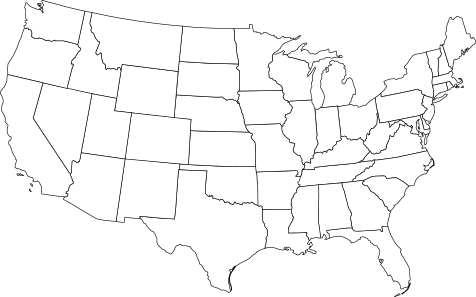
Natural disasters like hurricanes and tornadoes can wreak havoc on schools and infrastructure in communities across the country. Luckily, there are options for protecting FEMA-approved safe rooms from major storm damage. Specifically, hurricane doors and tornado doors offer much-needed protection for safe rooms within buildings.
When considering tornado doors vs. hurricane doors, it’s important to note that these doors do not prevent damage to the entire building. Instead, they are specifically designed to protect the occupants of a designated safe room, providing a place of refuge during and after a storm.
Below, we explore how communities are implementing storm protection measures, the differences in testing requirements for tornado and hurricane doors, and how to choose the right door for your facility.
Windows and Doors for Tornado/Hurricane Shelters
Tornadoes and hurricanes cause millions of dollars in damage each year. Severe storms create widespread destruction, especially in areas prone to frequent hurricane seasons or tornado outbreaks.
Insulgard’s STORMDEFEND® windows and doors are specifically designed for tornado and hurricane shelters. These products are not intended to prevent general building damage but instead work as components of FEMA-approved safe rooms. Examples of where these doors are used include:
- Schools
- Community shelters
- Emergency operation centers
- Police and fire stations
Tornado Doors vs. Hurricane Doors – Testing Requirements
Doors meeting ICC 500 and FEMA 361 standards for tornado shelters must undergo:
- Static pressure testing to verify that they can withstand high wind loads.
- Debris impact testing using high-speed projectiles to simulate storm conditions.
For hurricane-rated doors, the testing process is even more extensive. After completing debris impact testing, hurricane doors must also undergo:
- Cyclic pressure testing, which simulates the sustained high winds and fluctuating pressures experienced during hurricanes. Unlike tornadoes, hurricanes can last for hours, making cyclic testing critical for ensuring long-term performance.
It’s important to note that these doors are not intended for standard construction. Tornado and hurricane doors are only used in the construction of storm shelters that meet ICC 500-14 and FEMA 361-15 standards.
While hurricane shelters are not currently required by the International Building Code (IBC), any new school, emergency operations center, police station, or fire station built in a 250 mph wind zone is required to have a tornado-safe room that meets ICC 500-14 standards and is large enough to house all occupants.
How Safe Rooms Are Designed to Withstand Extreme Weather
Safe rooms are designed using strict engineering standards to provide protection from tornadoes, hurricanes, and extreme weather events. Several key factors contribute to their ability to withstand severe storms:
1. Reinforced Structural Components
Safe rooms are constructed using high-strength materials, such as:
- Steel-reinforced concrete walls to resist high wind pressures.
- Impact-resistant doors and windows to prevent breach from flying debris.
- Heavy-duty anchoring systems to secure the safe room to its foundation.
2. Door & Window Integration
The doors and windows used in a safe room must be impact-resistant and pressure-tested. If the doors or windows fail, the entire safe room is compromised. This is why ICC 500 and FEMA 361 standards are so stringent for storm shelter openings.
3. Ventilation & Emergency Features
Because safe rooms are sealed for maximum protection, they also include:
- Ventilation systems to maintain airflow.
- Backup power sources for emergency lighting and communication.
- Emergency exit features in case of obstructions.
By integrating these design elements, safe rooms provide life-saving protection during the most extreme storms.
Choosing the Right Tornado or Hurricane Door for Your Facility
Selecting the right storm-rated door depends on several key factors, including:
1. Geographic Location & Wind Zone Ratings
- K-12 schools and emergency facilities that are constructed in the 250 mph wind zone (such as parts of the Midwest and Southeast U.S.) and in regions that have adopted IBC 2015 or later are required to include tornado-safe rooms.
- Coastal regions affected by hurricanes may need hurricane-rated storm shelters that have been certified to pass cyclic pressure testing.
2. Building Type & Occupancy Requirements
- Schools, hospitals, and emergency operation centers must meet specific FEMA and ICC 500 requirements for shelter size and capacity.
- Private businesses or residential structures may have different safety considerations but still benefit from impact-resistant doors.
Insulgard’s Impact-Resistant Doors for Safe Rooms
Insulgard’s STORMDEFEND® TTH350 door system is tested and certified by Underwriters Laboratories (UL) to meet ICC 500-20 and FEMA 361-21 requirements.
Key Features of the TTH350 Door System:
- Designed for tornado and hurricane-safe rooms in the 250 mph wind zone.
- Built to withstand EF5 tornado conditions.
- UL 752 Level 3 bullet resistance, providing additional security beyond extreme weather protection.
- Exclusively compatible with TOR-GARD® 30 glazing for optimal impact resistance and clarity.
- Recognized as a top innovation in Building Design and Construction magazine’s Top 75 New Products list.
Tested for the Toughest Conditions
STORMDEFEND® impact-resistant safe room doors undergo rigorous testing, including:
- Debris impact tests simulating large projectile strikes.
- Wind pressure resistance to verify that doors stay intact during extreme storms.
- UL 752 ballistic testing for added protection against threats beyond weather-related damage.
For schools, emergency operation centers, and public safety facilities, investing in storm-rated doors is essential for compliance, safety, and long-term resilience.
Contact Us Today to Learn More
If you’re interested in learning more about tornado and hurricane doors or need help selecting the right impact-resistant solutions, Insulgard Security Products is here to help. Contact us today or request a quote.

